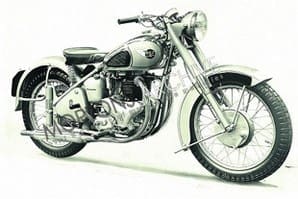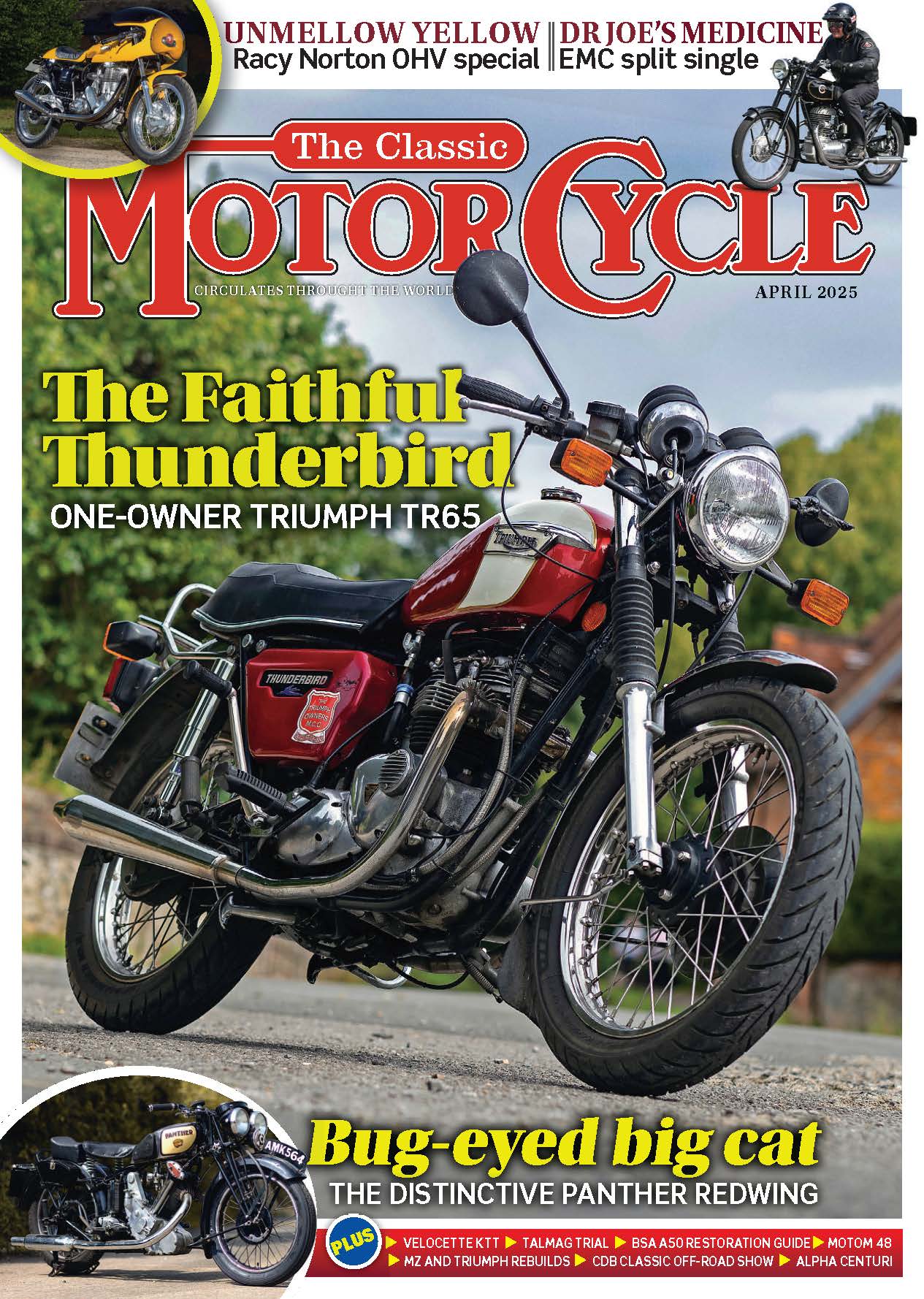
Soon, the new big BSA was a favourite and, updated over the years, it continued to sell well throughout the 1950s, gaining its swinging arm frame, better brakes and such, as the decade passed. The cooking model was replaced by the A65 Star for 1962; the old model's passing was much lamented.
A10s are, in a lot of ways, an ideal classic motorcycle. Easily capable of cruising at 60mph on the way to a club run, they're flexible enough to then trundle around the lanes in a high gear on a whiff of throttle, before happily conveying one home at a respectable speed.
Enjoy more Classic MotorCycle reading in the monthly magazine.
Click here to subscribe & save.
The standard A10, with its sit up and beg handlebars, possesses better handling and brakes than many of its contemporaries, though while they may look 'dowdy' to some, to others they possess an understated, classic style.
The sporty jobs are an altogether different proposition; an RGS will not only keep up with most traffic, it'll get you ahead of it. A real A-road stormer, only problem is, every time you stop, some 'wag' will, inbetween trying to pick fault, say: "Real one is it? Aye, they all are now…"
If you're lucky enough to own a genuine RGS, just don't stop; you won't want to anyway…
Model description and production years follow.
1949 BSA Golden Flash Plunger
Announced in October 1949, the 646cc A10 was actually a new design, despite looking similar to the earlier 500cc A7. In fact, a new A7 followed the A10, based on the bigger bike. Initially, it was reckoned that 35bhp was being produced while its unusual (for the time) beige finish lead to the Golden Flash name.
1954 BSA Road Rocket
Not quite the first 'hot' A10 – that was the Super Flash, which used the plunger frame – the Road Rocket was first shown at shows abroad in early 1954, introduced to the British line-up at Earls Court later that season. 8:1 compression ratio and, until 1957, TT carb.
1955 BSA Golden Flash Swinging Arm
With the adoption of the swinging arm frame, BSA abandoned the semi-unit construction of the plunger A10, reverting to separate engine and gearbox. The swinging arm frame was phased in from 1955, running alongside the older job for a while.
1958 BSA Super Rocket
The 1958 season replacement for the Road Rocket, with monobloc carb and 8.3:1 compression ratio, produced a claimed 43bhp; there was a stiffened crankshaft assembly too, with the new engine also going into a US-market scrambler. There was also a new eight inch front brake.
1959 BSA A10 Police Issue
The A10 was a favourite with police forces, with some even equipped for 'motorway duties' when the M1 opened in 1959. This equipment extended to Avon 'dustbin' fairing and windtone horns, while some sported briefer fairings and some went naked. Police forces at hme and abroad used them.
1962 BSA Rocket Gold Star
The ultimate fast 650cc pre-unit Beesa twin, produced by putting a Super Rocket engine (with upgraded 9:1 compression ratio and a bigger monobloc added) into the discontinued single cylinder Gold Star chassis (though it didn't have the Goldie single's 'kink') and cycle parts. Only made in 1962-63.
Visit the Mortons Archive for more information and online search options concerning BSAs, or speak to our archivist Jane Skayman on 01507 529423 with your requirements. Email [email protected]
Other articles in the 'which model' series:
? Ariel Square Fours
? BSAs
? BSA A10s
? Cammy Norton Singles
? Norton Commando
? Norton ES2
? Triumph Thunderbird
? Velocette LE
Advert
 Enjoy more The Classic MotorCycle reading in the monthly magazine. Click here to subscribe.
Enjoy more The Classic MotorCycle reading in the monthly magazine. Click here to subscribe.



